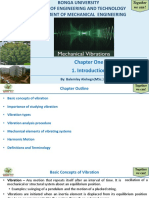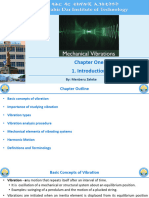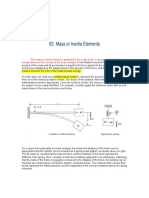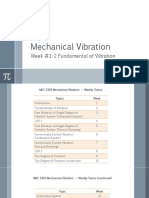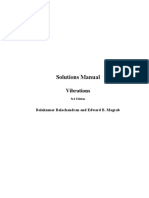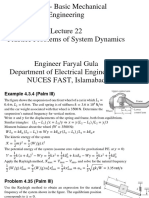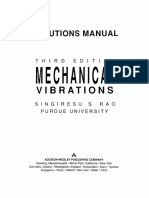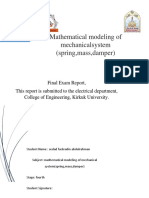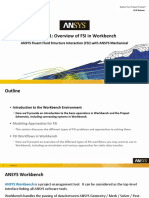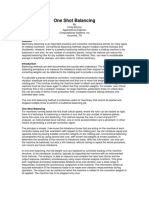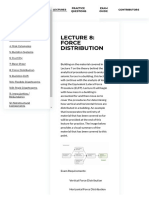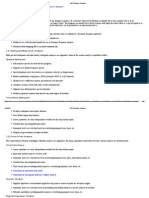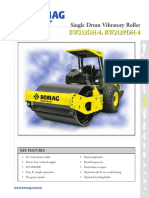0% found this document useful (0 votes)
175 views51 pagesVibration Damping and Analysis Techniques
1) The document describes mathematical models of varying complexity to analyze vibration in a motorcycle system. It begins with a single degree-of-freedom model and refines it to include additional components like tire elasticity and strut damping.
2) Spring elements are analyzed, including definitions of spring force and strain energy. Combinations of springs in parallel and series are also covered.
3) Examples are provided to calculate spring constants for systems like a propeller shaft and crane boom. Equivalent spring constants are determined for combined spring elements.
Uploaded by
ይታገሡ ተሥፋዬCopyright
© © All Rights Reserved
We take content rights seriously. If you suspect this is your content, claim it here.
Available Formats
Download as PDF, TXT or read online on Scribd
0% found this document useful (0 votes)
175 views51 pagesVibration Damping and Analysis Techniques
1) The document describes mathematical models of varying complexity to analyze vibration in a motorcycle system. It begins with a single degree-of-freedom model and refines it to include additional components like tire elasticity and strut damping.
2) Spring elements are analyzed, including definitions of spring force and strain energy. Combinations of springs in parallel and series are also covered.
3) Examples are provided to calculate spring constants for systems like a propeller shaft and crane boom. Equivalent spring constants are determined for combined spring elements.
Uploaded by
ይታገሡ ተሥፋዬCopyright
© © All Rights Reserved
We take content rights seriously. If you suspect this is your content, claim it here.
Available Formats
Download as PDF, TXT or read online on Scribd
/ 51


















